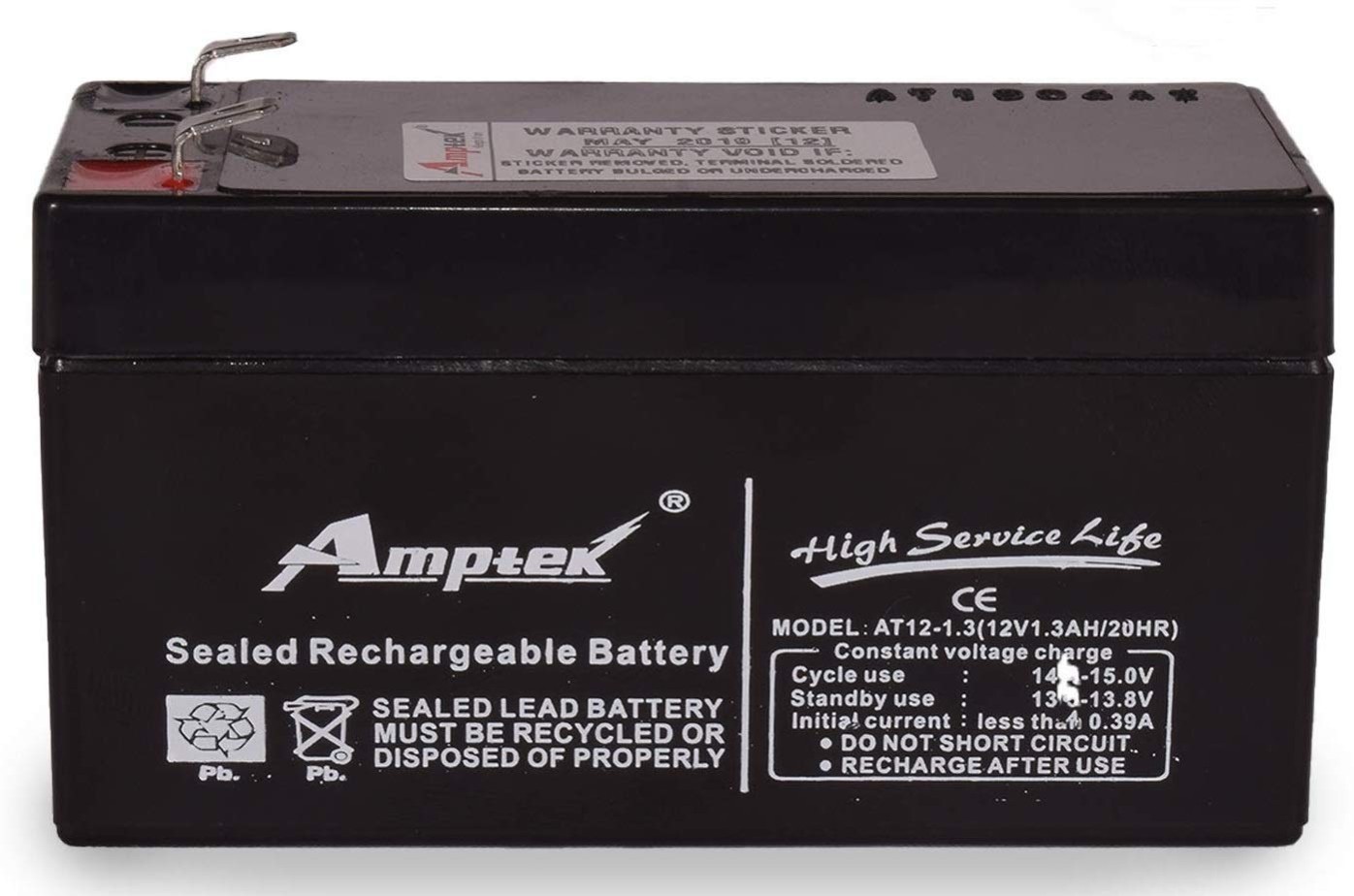








12V 1.3 AH BATTERY
12V 1.3Ah Rechargeable Lead Acid Battery is normally use for robots in competition. Wired or Wireless Robots runs for a long time with high speed with this type of battery. Seal Lead Acid (SLA) Rechargeable battery is the most common general purpose battery.
₹ 496 ₹551
551



| Made In : | India |
Add FAQ
A 12V 1.3 AH (Ampere-Hour) battery is a type of rechargeable battery commonly used in various applications where 12V power is needed. Understanding its characteristics and how to use it effectively can be crucial for ensuring reliable performance in your projects. Here’s a comprehensive guide on using a 12V 1.3 AH battery:
Overview
Key Specifications
- Voltage: 12 volts (nominal)
- Capacity: 1.3 ampere-hours (AH)
- Type: Often a lead-acid battery (e.g., sealed lead-acid, or SLA) but can also be a lithium-ion or other chemistry.
- Dimensions: Usually compact, making it suitable for small devices and backup power.
Battery Types
-
Sealed Lead-Acid (SLA):
- Advantages: Cost-effective, robust, widely available.
- Disadvantages: Heavier, less energy-dense compared to newer battery technologies.
-
Lithium-Ion (Li-ion):
- Advantages: Higher energy density, lighter weight, longer lifespan.
- Disadvantages: More expensive, requires specific charging protocols.
Usage
Connecting the Battery
- For Electronic Projects: Use a DC-DC converter to step down the voltage if your project requires a different voltage (e.g., 5V or 3.3V).
- For DC Devices: Directly connect the battery to devices that operate at 12V.
Charging the Battery
-
Lead-Acid Batteries:
- Charger: Use a charger specifically designed for 12V lead-acid batteries.
- Charging Voltage: Typically around 13.8V to 14.4V.
- Charging Current: Should be within the battery manufacturer’s specifications, often around 0.1C (where C is the battery capacity, so 0.13A for a 1.3AH battery).
-
Lithium-Ion Batteries:
- Charger: Use a charger designed for the specific type of lithium battery.
- Charging Voltage: Follow the manufacturer’s specifications, usually around 12.6V.
- Charging Current: Typically lower than for lead-acid batteries; refer to the manufacturer’s recommendations.
Discharging the Battery
- Current Draw: The battery can provide 1.3 amps for 1 hour, or 0.65 amps for 2 hours, assuming ideal conditions. Be cautious of over-discharging, as this can reduce battery life.
- Power Consumption Calculation: Calculate power consumption using Power=Current×Voltage ext{Power} = ext{Current} imes ext{Voltage}Power=Current×Voltage. For instance, a device drawing 0.5 amps will consume 6 watts (0.5A × 12V).
Practical Applications
- Backup Power: Commonly used in UPS (Uninterruptible Power Supply) systems for small electronics.
- Solar Power Systems: Can be used in off-grid solar power systems for storing energy.
- Electric Vehicles: Used in small electric scooters or bikes.
- DIY Projects: Useful in projects that require a portable 12V power source.
Maintenance
-
Lead-Acid Batteries:
- Check for Sulfation: Periodic charging can help prevent lead sulfate crystals from forming on the plates.
- Avoid Deep Discharge: Try to keep the battery’s charge above 50% to extend its life.
- Clean Terminals: Ensure that battery terminals are clean and free of corrosion.
-
Lithium-Ion Batteries:
- Avoid Overcharging: Use a charger with appropriate cut-off mechanisms.
- Store Properly: Keep in a cool, dry place and avoid extreme temperatures.
Safety Considerations
- Short Circuits: Avoid short-circuiting the battery terminals.
- Overcharging: Use appropriate chargers and avoid overcharging to prevent overheating and potential damage.
- Disposal: Dispose of batteries according to local regulations, especially for lead-acid and lithium-ion batteries, due to their hazardous materials.
Troubleshooting
- Battery Not Charging: Check connections, ensure the charger is suitable, and inspect for potential issues with the battery itself.
- Battery Not Providing Power: Verify the load and check the battery’s voltage with a multimeter. It might need recharging or replacement.
- Battery Overheating: Ensure proper ventilation during charging and check for potential issues with the charging equipment.
Conclusion
A 12V 1.3 AH battery is a versatile and useful component in various applications. Proper handling, charging, and maintenance are key to ensuring its longevity and performance. If you have any specific questions or need further details about using this battery in your project, feel free to ask!
0 Reviews For this Product





2.jpg&width=225&quality=80)

